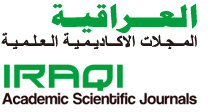Strategies for applying artificial intelligence (AI) in sustainable environmental advertising design
DOI:
https://doi.org/10.35560/jcofarts1632Keywords:
artificial intelligence, sustainable environment, interactive communicationAbstract
In our current era, there has been a successive leap in global interest in environmental and sustainability issues, embodied by accelerating smart technologies, becoming a reality that has imposed its presence in the face of a large number of challenges, including economic, political, and scientific ones. It has become imperative to adopt green intelligence to enhance environmental awareness through the communication message embodied in displaying the environmental identity in ways that are consistent with these qualitative leaps and developments characterized by their powerful influence on various aspects of life, which include all sciences, including the art of design, to be captive to these variables, which necessitated harnessing them in the advertising content industry. The developments revealed by artificial intelligence included changes in the world of design and advertising content industry, as advertising design for sustainable environments has become more targeted and effective in delivering the communication message by adopting advanced advertising tools supported by artificial intelligence (Adcreativ.AI). The research included the first chapter (the methodological framework) a problem defined by the following question: What are the strategies for applying artificial intelligence in sustainable environment advertising designs? The research objective and importance. The second chapter (the theoretical framework) includes two sections: the first: Strategies for applying artificial intelligence to enhance sustainable environmental advertising, and the second: Designing environmentally friendly advertisements using artificial intelligence applications - enhancing visual identity and communication effectiveness. The third chapter (research procedures) includes an experimental approach using a consensus or comparison method to achieve the research objective, arriving at scientific facts characterized by solidity and accuracy. The most important research findings include:
- The use of generative artificial intelligence (GAI) to create environmental advertising content has resulted in aesthetic values that contribute to the formation of attractive elements consistent with sustainability standards.
2. The use of artificial intelligence applications has created capabilities capable of transforming traditional digital design to a new level of creativity that may effectively contribute to consolidating and enhancing the visual identity of communication messages.
References
Abu Nabaa, A.-Z. (2014). Effective Advertising Engineering: An Introduction to the Advertising Industry. United Arab Emirates: Dar Al-Kitab Al-Jami’i.
Al-Hamawi, Y. (2024). The Psychology of Artificial Intelligence. Jordan: Irbid Scientific Platform.
Brown, A. (2022). AI and Content Generation. B.B: Future Tech.
Green, T. (2019). Designing for Sustainability. B.B: Eco Books.
Hamid, M. (2023). The Psychology of Artificial Intelligence - A Comprehensive View. Cairo: Dar Al-Husseini for Printing and Publishing.
Harris, M. (2021). Targeting Audiences with AI. Digital Marketing Review. B.B: B.N.
Hassan, S. (2010). The effect of using kinetic packaging materials (Alucopon) in achieving unity and visual attraction for the commercial structure. Baghdad: Iraqi Journal of Architecture, Volume 6.
Jather, S. H. (2020). Deceptive Marketing. Baghdad: Dar Al Manahj for Publishing and Distribution.
Johnson, L. (2021). Artificial Intelligence in Design. B.B: Tech Publications.
Jonasson, G. (2007). Innovative Marketing. Saudi Arabia: Al-Shaqri Library.
Kumar, R. (2011). Differences between Artificial Intelligence and Human Intelligence Analytics Steps. B.B: B.N.
Landa, R. (2017). Advertising and Design: Creating Creative Ideas in Media. (S. Mukhtar, Trans.) UK: Al-Hindawi Foundation CEC.
Lee, S. (2023). AI Tools for Graphic Design. Creative Solutions. B.B: B.N.
Macias, W. (2003). A preliminary Structural Model of comprehension of Interactive Advertising Brand Web Sites. B.B: Journal of Interactive Advertising - Vol 3 No 2.
Muhammad, I.-D. (2024). Artificial Intelligence and the Transformation of the Advertising Industry. Egypt: Heritage and Design Journal - Proceedings of the First Conference of the College of Design and Creative, ArtsAhram Canadian University.
Smith, J. (2020). Sustainable Advertising: A Guide to Eco-Friendly Practices. B.B: Green Press.
Taylor, R. (2021). Data Analysis in Advertising. Marketing Insights. B.B: B.N.
Wilson, P. (2020). Reducing Waste in Advertising. B.B: Eco Journal.














